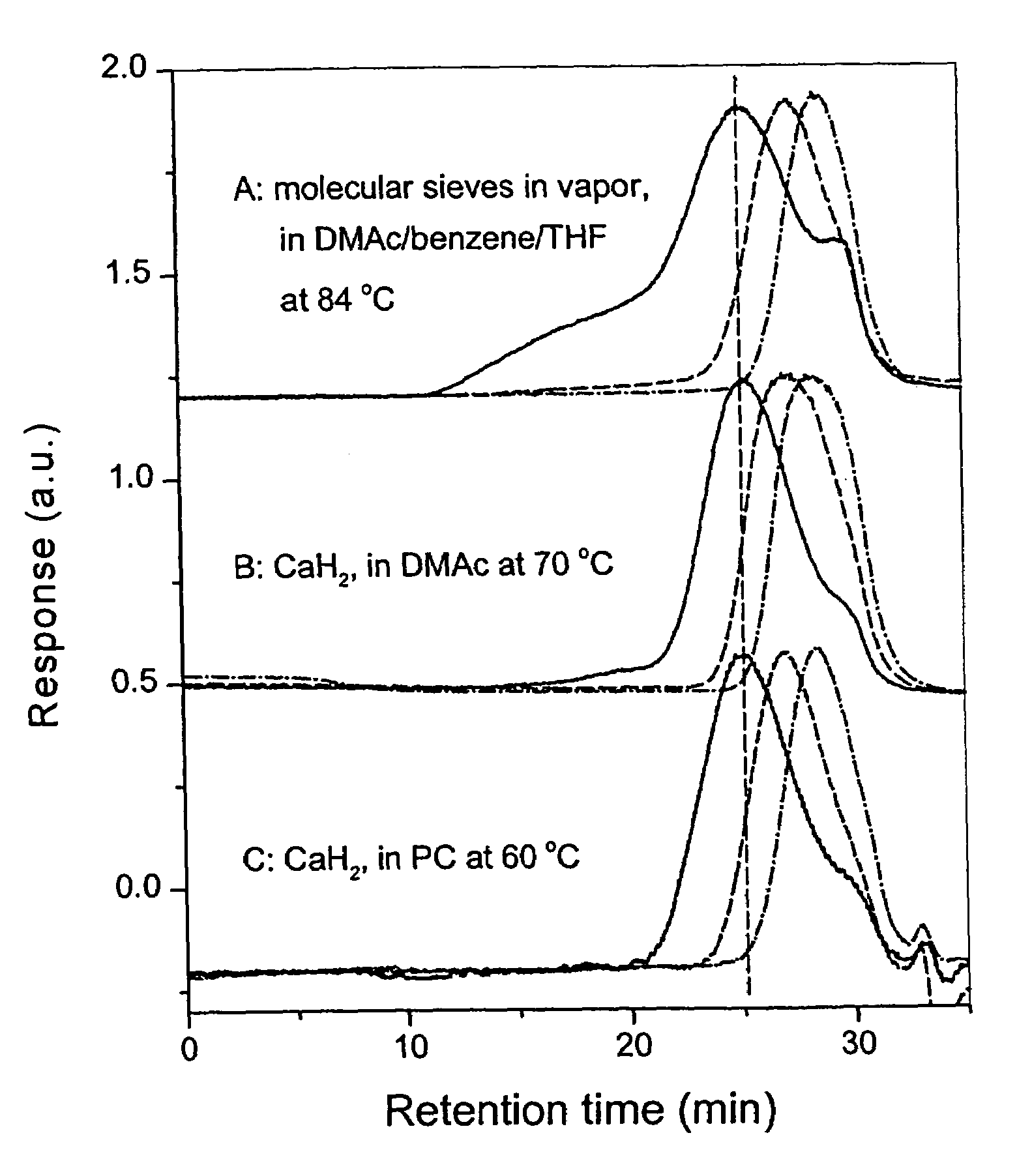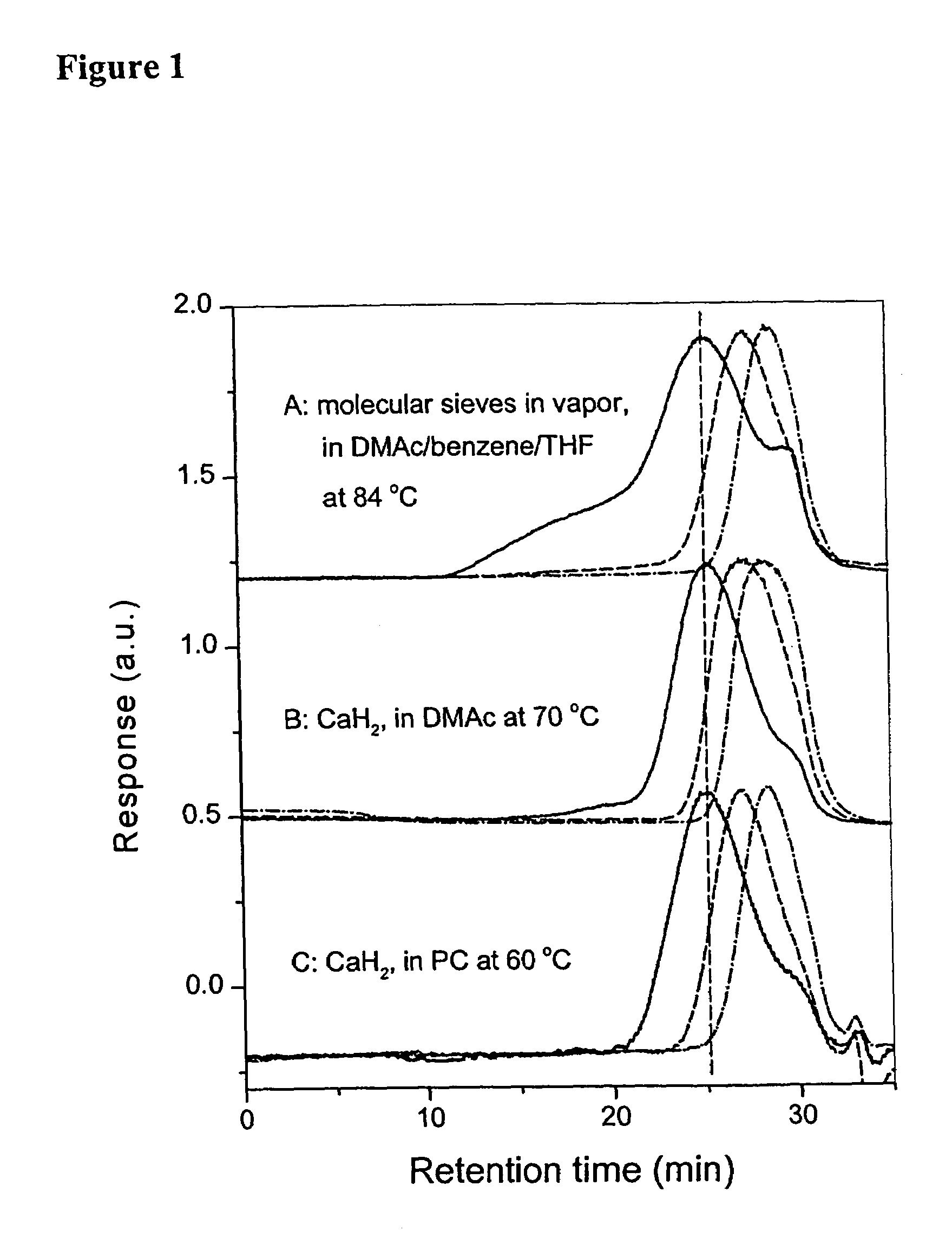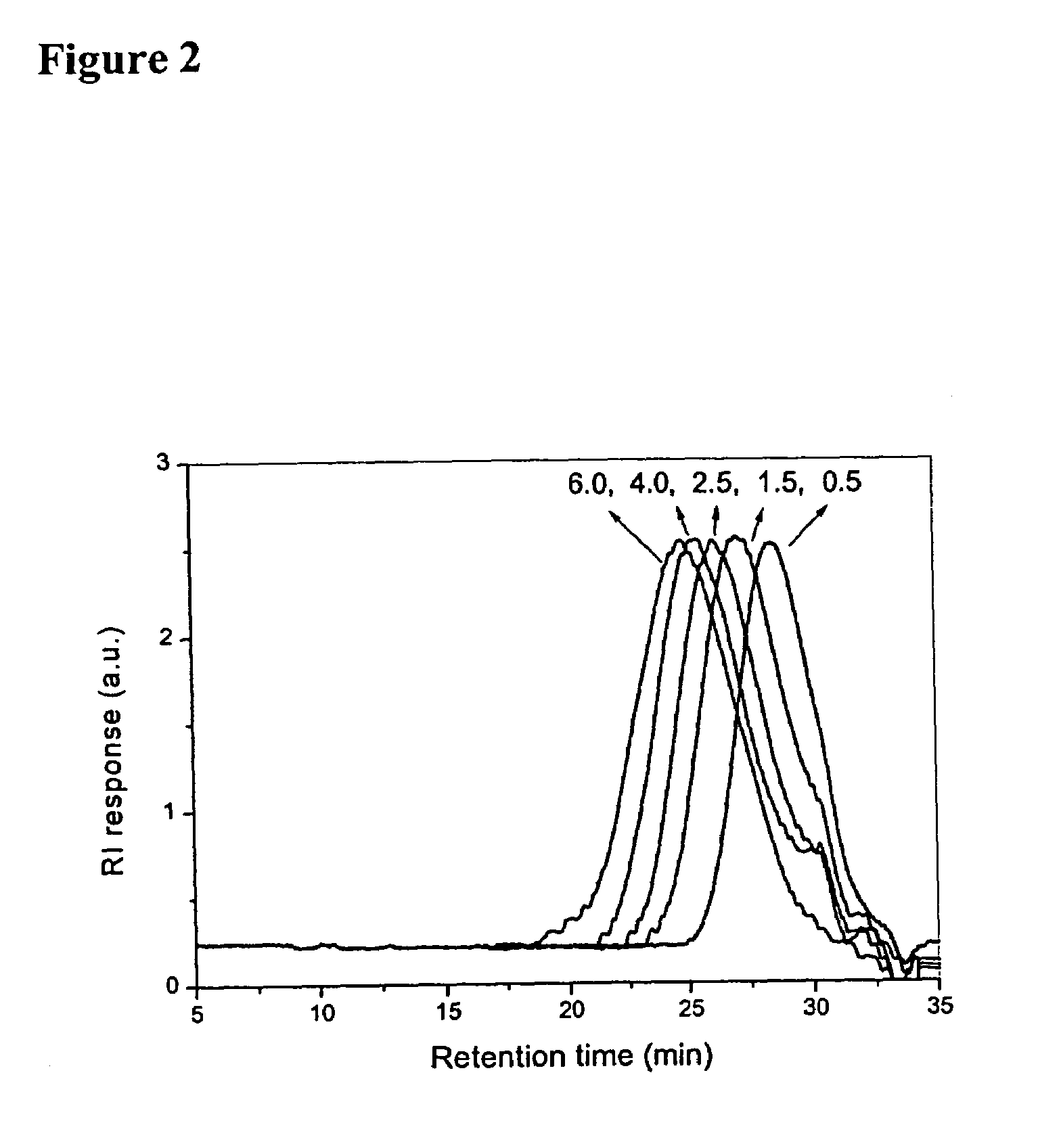Techniques for the preparation of highly fluorinated polyethers
a technology of fluorinated polyethers and polyethers, which is applied in the direction of chemical/physical/physical-chemical stationary reactors, chemical/physical/physical-chemical processes, chemical/physical/physical-chemical processes, etc., to achieve good control of reaction, promote reaction, and enhance reaction selectivity
- Summary
- Abstract
- Description
- Claims
- Application Information
AI Technical Summary
Benefits of technology
Problems solved by technology
Method used
Image
Examples
Embodiment Construction
Reaction Schemes:
1. The Preparation of Linear Polymers.
[0083][0084]Condition: Method 1, for FPESO, CaH2 in Vapour, K2CO3 in DMAc / THF (1 / 2, v / v) at 80° C., 100 min.[0085]Method 2, for FPESO, KF+CaH2 in PC, 70° C., 6 hr.
2. Fluorinated poly(arylene ether) with FSt End-Capper.
[0086]
Condition:[0087]Method 1. For FPEK, MS (in vapour)+K2CO3 in DMAc / Benzene (10 / 5,v / v) (i) 117° C., 40 min, (ii) 109° C., 20 min[0088]Method 2. For FPEK, CaH2+KF in DMAc (i) 120° C., 3 hr, (ii) 70° C., 3 hr.[0089]For FPESO, CaH2+KF in DMAc (i) 120° C., 3 hr, (ii) 70° C., 1.5 hr.
3. Fluorinated poly(arylene ether) with FSt as Chain Extender and End-Capper.
[0090][0091]Method 1. For FPEK, MS (in vapour)+K2CO3 in DMAc / Benzene (10 / 5,v / v) (i) 117° C., 250 min, (ii) 106° C., 60 min[0092]Method 2. For FPESO, (i) MS (in vapour)+K2CO3 in DMAc / Benzene (10 / 5, v / v), 117° C., 250 min,[0093](ii) CaH2+KF in DMAc, 70° C., 1.5 hr.
[0094]In the present invention, basically two reaction methods have been presented. In Method 1, commo...
PUM
| Property | Measurement | Unit |
|---|---|---|
| Mass | aaaaa | aaaaa |
| Temperature | aaaaa | aaaaa |
| Temperature | aaaaa | aaaaa |
Abstract
Description
Claims
Application Information
 Login to View More
Login to View More - R&D
- Intellectual Property
- Life Sciences
- Materials
- Tech Scout
- Unparalleled Data Quality
- Higher Quality Content
- 60% Fewer Hallucinations
Browse by: Latest US Patents, China's latest patents, Technical Efficacy Thesaurus, Application Domain, Technology Topic, Popular Technical Reports.
© 2025 PatSnap. All rights reserved.Legal|Privacy policy|Modern Slavery Act Transparency Statement|Sitemap|About US| Contact US: help@patsnap.com



